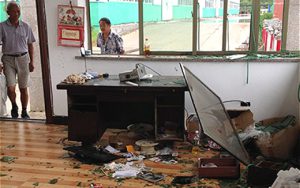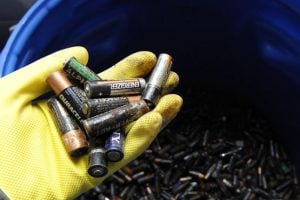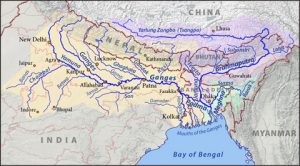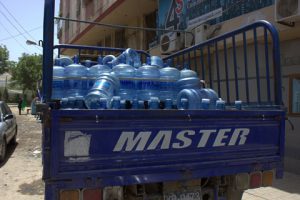The case only came to light when both the official and the ultimate owner of the mine, which was run by Yunnan Jinding Zinc, were removed from their positions as part of an anti-corruption investigation.
The mine is accused of polluting surrounding fields and rivers, causing lead poisoning in local children, a report from Greenpeace on June 8 said.
There is still no indication of how the legacy of pollution will be dealt with.
In April Greenpeace staff gathered soil and water samples from the mine in Lanping county, and submitted these to an independent third-party laboratory.
Many soil samples were found to have excess levels of heavy metals – cadmium was present at 142 times the permitted level, and lead at 8 times. The closer the source of the sample to Jinding Zinc’s smelter, the greater the pollution.
Water samples taken from the Bi River found high levels of cadmium and lead – up to 3.6 times and 15.7 times permitted levels, respectively.
The company recycles 70% of its waste water, but the remainder is treated then discharged into the Bi.
Public records show that the company was found to have breached rules on release of pollutants almost every year from 2009 to 2014 – only in 2012 was no breach recorded.
In the other years there was at least one report of a breach. In 2009 the company was punished by the provincial environmental authorities for building an illegal waste outlet to dump heavy metal-polluted water into the Bi – levels of cadmium were 887 times permitted levels.
Jinding Zinc was originally the Yunann Lanping Non-Ferrous Metals Co – the name was changed after control passed to the Sichuan Hongda Group in 2003. Hongda, controlled by Liu Han, has a 60% stake in the Lanping lead-zinc mine, giving it control of what is Asia’s biggest and the world’s fourth-biggest mine of its type.
Bai Enpei, former provincial Party secretary and vice-chair of the National People’s Congress Environment and Resources committee, had in the past been treated as an honoured guest by Liu Han.
In May 2014 Liu and 35 others were investigated for suspected links to organised crime. On February 2 Liu was sentenced to death for murder and organising, leading and participating in racketeering. Bai Enpei fell from power for grave disciplinary breaches.
Liu Han had been said to have links to the son of former Central Committee member Zhou Yongkang. On April 3 prosecutors charged Zhou with accepting bribes, abuse of power, and revealing state secrets.
It was after this that the pollution in Lanping came to light. Although the company’s business was affected by Liu Han’s troubles, it is still operating normally.
Earlier reports
In 2009 Zhang Wen, a former teacher at Dali College’s School of Public Health, reported high levels of zinc found in the hair of 159 children living in Lanping and linked this with the nearby mine.
In 2010 head of the college, Zhang Xiaoyun, and others carried out a study of heavy metals in fruit and vegetables from the area around the mine, finding that in the majority of cases levels of lead, cadmium and zinc were higher than those allowed in food.
Children near the mine are at high risk of lead poisoning. Public data shows that in testing carried out by the county health bureau in 2010 in the village of Maigandian, very close to the mine, 59 of 61 children had high levels of lead, with the problem also common in another village, Xiangbo.
Ma Zhuangyuan, head of the county health bureau, told the media that more children were being found with lead poisoning than without.
In response to a request from the county government, in 2006 Jinding Zinc came up with a plan to relocate the two villages, but it was not implemented. In 2013 the county restarted these plans, forming a working group chaired by the county head and aiming to have villagers in new homes by the end of 2016.
The employee also told Caijing that the company had not yet decided how to deal with the lead poisoning issue.
This article was originally published in Caijing magazine







